
 The V-22 Osprey is a tiltrotor vertical/short takeoff and landing (VSTOL), multi-mission air-craft developed to fill multi-Service combat operational requirements. The MV-22 will replace the current Marine Corps assault helicopters in the medium lift category (CH-46E and CH-53D), contributing to the dominant maneuver of the Marine landing force, as well as supporting focused logistics in the days following commencement of an amphibious operation. The Air Force variant, the CV-22, will replace the MH-53J and MH-60G and augment the MC-130 fleet in the USSOCOM Special Operations mission. The Air Force requires the CV-22 to provide a long-range VTOL insertion and extraction capability. The tiltrotor design combines the vertical flight capabilities of a helicopter with the speed and range of a turboprop airplane and permits aerial refueling and world-wide self deployment.
The V-22 Osprey is a tiltrotor vertical/short takeoff and landing (VSTOL), multi-mission air-craft developed to fill multi-Service combat operational requirements. The MV-22 will replace the current Marine Corps assault helicopters in the medium lift category (CH-46E and CH-53D), contributing to the dominant maneuver of the Marine landing force, as well as supporting focused logistics in the days following commencement of an amphibious operation. The Air Force variant, the CV-22, will replace the MH-53J and MH-60G and augment the MC-130 fleet in the USSOCOM Special Operations mission. The Air Force requires the CV-22 to provide a long-range VTOL insertion and extraction capability. The tiltrotor design combines the vertical flight capabilities of a helicopter with the speed and range of a turboprop airplane and permits aerial refueling and world-wide self deployment.
Two 6150 shaft horsepower turboshaft engines each drive a 38 ft diameter, 3-bladed proprotor. The proprotors are connected to each other by interconnect shafting which maintains proprotor synchronization and provides single engine power to both proprotors in the event of an engine failure. The engines and flight controls are controlled by a triply redundant digital fly-by-wire system.
The airframe is constructed primarily of graphite-reinforced epoxy composite material.
The composite structure will provide improved strength to weight ratio, corrosion resistance, and damage tolerance compared to typical metal construction. Battle damage tolerance is built into the aircraft by means of composite construction and redundant and separated flight control, electrical, and hydraulic systems. An integrated electronic warfare defensive suite including a radar warning receiver, a missile warning set, and a countermeasures dispensing system, will be installed.
BACKGROUND INFORMATION
The V-22 is being developed to meet the provisions of the April 1995 Joint Multi-Mission Vertical Lift Aircraft (JMVX) Operational Requirements Document (ORD) for an advanced vertical lift aircraft. The JMVX ORD calls for an aircraft that would provide the Marine Corps and Air Force the ability to conduct assault support and long-range, high-speed missions requiring vertical takeoff and landing capabilities.
Since entry into FSD in 1986, the V-22 T&E program has concentrated principally on engineering and integration testing by the contractors. Three periods of formal development test by Naval Air Warfare Center-Aircraft Division (NAWCAD) Patuxent River, plus OTA participation in integrated test team (ITT) activities at Patuxent River, have provided some insight into the success of the development effort. After transition to EMD in 1992, an integrated contractor/government test team conducted all tests until OT-IIA in 1994. Since then, two additional periods of OT&E have been conducted.
The first operational test period (OT-IIA) was performed by COMOPTEVFOR, with assistance from AFOTEC, from May 16 to July 8, 1994, and accomplished 15 hours of actual flight test operations, within an extremely restricted flight envelope. The Navy, with Air Force support, published a joint evaluation report addressing most mission areas the V-22 is to perform.
OT-IIB was conducted from September 9, to October 18, 1995, and comprised 10 flight hours in 18 OT&E flights, plus ground evaluations. A joint Air Force/Navy OT-IIB report was published. Partly in response to DOT&E concern expressed over the severity of V-22 downwash in a hover observed during OT-IIA, the Navy conducted a limited downwash assessment concurrently with OT-IIB, from July to October 1995.
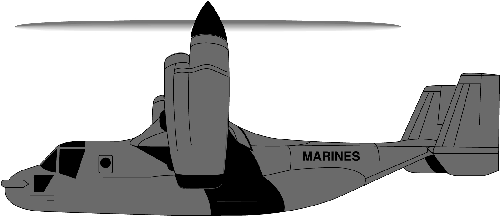
TEST & EVALUATION ACTIVITY
In accordance with the approved TEMP, OT-IIC was conducted in six phases at NAS Patuxent River and Bell-Boeing facilities in Pennsylvania and Texas, from October 1996, through May 1997.
Significant flight limitations were placed on the FSD V-22 in OT&E to date, including:
- not cleared to hover over unprepared landing zones until OT-IIC
- no operational internal or external loads or passengers
- moderate gross weights only
- not cleared to hover over water.
In addition, FSD aircraft equipment was not representative of any mission configuration. Together, these aircraft clearance and configuration limits produced an extremely artificial test environment for OT-IIC.
The OT-IIB report expressed serious concerns regarding the potential downwash effects, and recommended further investigation. While a limited assessment of downwash and workaround procedures was included in OT-IIC, complete resolution of the downwash issue will not be possible until the completion of OPEVAL, just prior to milestone III in 1999.
The Navy is conducting an aggressive LFT&E program on representative V-22 components and assemblies, in compliance with a DOT&E-approved alternative LFT&E plan. The V-22 program was granted a waiver from full-up, system-level LFT&E in April, 1997. The vulnerability testing that the program is performing is appropriate and will result in the improvement of aircraft survivability.
The V-22 program TEMP was last approved by DOT&E on September 28, 1995, and will be updated prior to each OT&E period scheduled.
TEST & EVALUATION ASSESSMENT
With DOT&E encouragement, the Navy greatly expanded the scope of OT-IIC to get better insight into the effectiveness and suitability of the EMD design. The results, while not yet conclusive regarding the potential operational effectiveness and suitability of operational aircraft, were encouraging. The six phases of the OT-IIC Assessment included: (1) shipboard assessment, (2) maintenance demonstrations, (3) tactical aircraft employment via FSD aircraft and manned flight simulator, (4) operational training plans, (5) program documentation review, and (6) software analysis.
In assessing the operational effectiveness and suitability COIs, COMOPTEVFOR and AFOTEC found that in most cases, only moderate risk exists that the COIs will not be satisfactorily resolved when development is complete. Enhancing features observed during OT-IIC included aircraft payload, range and speed characteristics better than the stated operational requirements. In addition, reliability, availability and maintainability of the EMD aircraft appeared to be significantly improved over those of the FSD aircraft.
Several areas of concern first discovered in OT-IIA or OT-IIB remain unresolved because of limitations to the EMD flight test operations. These concerns include severe proprotor downwash effects during personnel insertion and extraction via hoist or rope. In addition, concerns exist in the areas of communications, navigation , and crew field of view. New concerns arising from OT-IIC regarding the EMD schedule are being addressed by the program manager. Also, the reliability and maintainability of a few subsystems will require management attention. Despite these concerns, the V-22 design remains potentially operationally effective and suitable.
The program was revived by the incoming Clinton administration, and current plans call for building 458 Ospreys for $37.3 billion, or more than $80 million apiece, with the Marines receiving 360 Ospreys, the Navy 48 and the Air Force 50. The first prototype flew in 1989. As of early 2000 three test aircraft had crashed: no one was killed in the 1991 crash, an accident in 1992 killed seven men, and the third in April 2000 killed 19 Marines.
Specifications | |
| Primary function | Amphibious assault transport of troops, equipment and supplies from assault ships and land bases |
| Prime Contractor(s) | Boeing Defense and Space Group, Philadelphia, PA Bell Helicopter Textron, Ft Worth, TX Allison Engine Company, Indianapolis, IN |
| Description | The V-22 Osprey is a multi-engine, dual-piloted, self-deployable, medium lift, vertical takeoff and landing (VTOL) tiltrotor aircraft designed for combat, combat support, combat service support, and Special Operations missions worldwide. It will replace the Corps' aged fleet of CH-46E and CH-53D medium lift helicopters |
| Variants |
|
| Length | 57' 4" - Spread 63' 0" - Folded |
| Width | 84' 7" - Spread 18' 5" - Folded |
| Height | 22' 1" - Spread 18' 1" - Folded |
| Takeoff Weights | 47,500 lb Vertical Takeoff/Landing (VTOL) 55,000 lb Short Takeoff/Landing (STOL) 60,500 lb Self Deploy STO |
| Range | 200nm Pre-Assault Raid with 18 troops 200nm Land Assault with 24 troops 50 nm (x2) Amphibious Assault 500 nm Long Range SOF Missions (USAF/CV-22) 2100 nm Self Deploy (with one refueling) 50 nm External Lift Operations with 10,000 lb load |
| Cruise Airspeed | 240 kts (MV-22) 230 kts (CV-22) |
| Milestones | First Flight - March 19, 1989 First Sea Trials - USS Wasp (LHD-1), December, 1990, Aircraft # 3 & 4 First EMD Flight - February 5, 1997 2nd Sea Trials - USS Saipan (LHA-2), January, 1999, Aircraft #10 First LRIP Delivery - May 25, 1999 OPEVAL - Scheduled October, 1999 to May, 2000 Full Rate Production - First Quarter, 2001 IOC - USMC - 2001; US SOCOM - 2004 |
| Unit Cost | $40.1M (Total Program Recurring Flyaway, Constant Year, FY94$) |
| Number Procured | 12 MV-22(authorized through FY98) |
| Planned Inventory | 348 MV-22 (USMC) 50 CV-22 (USAF) 48 HV-22 (USN) |
| Deployed to | MV-22s will be deployed to all Marine Corps medium lift active duty and reserve tactical squadrons, the medium lift training squadron (FRS), and the executive support squadron (HMX) |
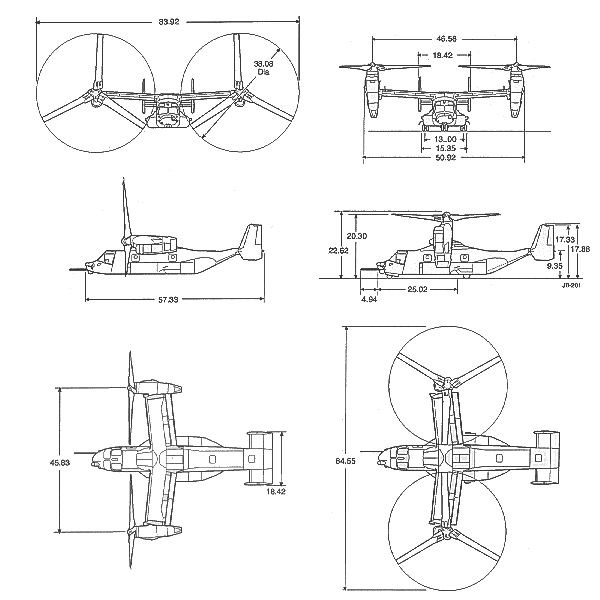

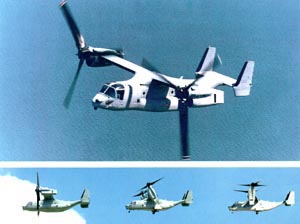
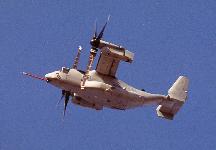
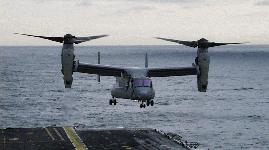
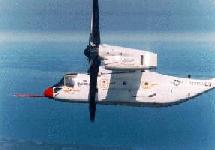
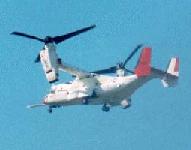
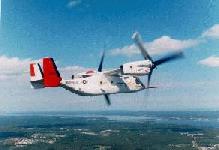
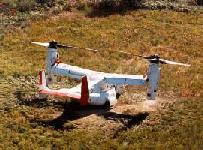
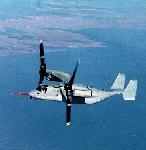


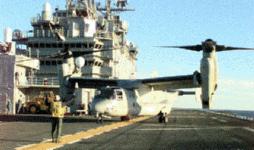
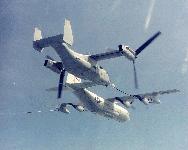

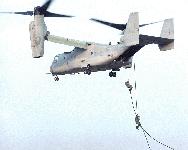
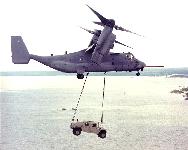
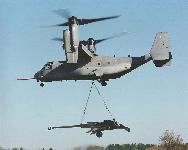
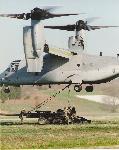

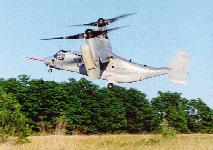
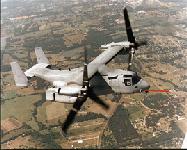
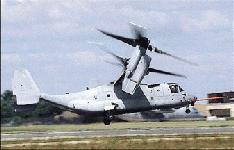
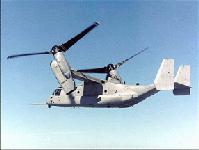

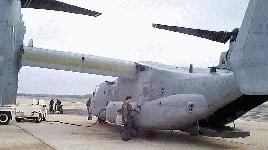
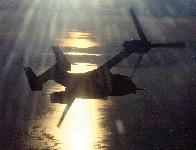

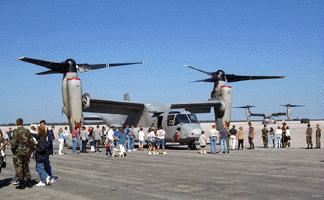






No comments:
Post a Comment